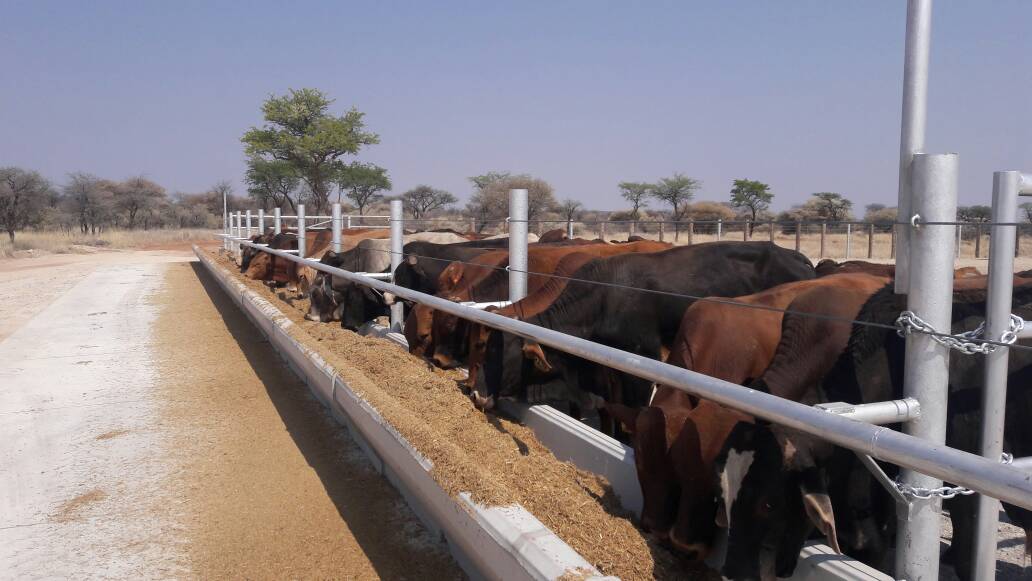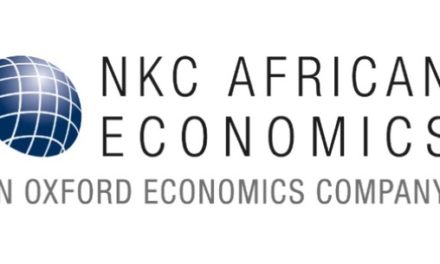
Ox production will only be viable again when slaughter prices improve

A weaner production system remains the obvious choice in certain cattle producing areas of Namibia: Farmers must be able to choose which system to follow.
By Helmke J Sartorius von Bach.
46% of the country’s total surface area is under cattle production:
It is implemented on approximately 37.52 million hectares in Namibia, which is 46% of the country’s total surface area. This production is practiced through different systems, that determine the sustainability and profitability of the farm. There are many ways in which beef production systems can be classified, but the typical one is defined by the age and body mass at which the cattle are traded. It must be understood that the production system is however not only determined by the intensity of land-use, as farmers with different land-uses can be equally profitable, while using different management systems.
There exist many production systems in Namibia, of which the two main once are compared as:
“The engine room” of beef production:
The weaner production system6 is often called the “engine room” of beef production. Under this system, a cow herd is kept on the farm and their calves are sold once they are weaned at 205 days for further processing. The number of weaners produced depends on many factors, such as the size of the cow herd, the fertility, the grazing availability, mortalities, and the practice to keep the cows in good condition throughout their production cycle.
The longer road to ox production:
If the farmer however decides to keep the offspring or buys weaners either for speculation, or to keep and feed them as slaughter animals, it is referred to as “oxen off-veld”. Calves stay for a year or longer, depending on the farmer’s calculations in terms of fodder or feed availability not only for the cows, but also for the oxen. The castrated bull or heifer calves are thus typically marketed at an age of 27 months with a minimum liveweight of 450 kilograms.
A careful decision:
Because of the biological process, a farmer cannot alternate easily between the two systems and must carefully determine which system to be maintained without price incentives provided. Many factors must be kept in mind, being the tenure system, the production area, climatic circumstances and its fodder flow, financial constraints, and fixed circumstances, such as market availability, farm size and extent of development, transport, labour, and veld type, etc.
The type of tenure determines whether farmers have control over their management decisions, such as to implement grazing systems, breeding systems, and manage the mortality. In the freehold system, the farmers are the sole decision makers, while in the communal areas, farmers’ intentions can be affected through the entering of an “unwanted” herd, bull of different breed or different practice.
Calculations are key:
The production area depends on factors like climatic conditions, the soil types, access to markets and infrastructure, etc. In areas where drought occurs more often, a tollie or slaughter animal system is more likely to work better than a weaner system, because of the percentage of breeding cows in the herd.
Cattle will at least need to eat an amount of roughage equivalent to three percent of its body weight per day. To avail roughage to the cattle herd, farmers should strive to determine the annual herbaceous kilogram dry matter available per hectare, to determine the number of cattle to be kept on the farm. This will help reduce unforeseen expenses. These estimates will help a farmer to budget and provide supplements effectively given the number of animals targeted. Many farmers do not use these estimates, and thus are losing out by either buying too much or too little stock, which in turn compromises productivity and income.
Geological area constraints:
Namibia’s ground cover and condition of soil in most cattle producing areas are indeed appropriate for cattle production, except for the Kaokoland agro-ecological zone (AEZ) (see map below). The latter shows serious degradation which impacts the continuation of any cattle production system in this area, as the botanical composition and soil condition are negatively affected.
Soil Map

Soil characteristics in Namibia, as tested by means of liver analysis showed that especially in the northern Kalahari Sand Plateau (see map above), and to a lesser extend in the Kalkveld zone, the widespread and common macro-mineral deficiencies involve phosphorus and micro‐minerals deficiencies in copper, manganese, zinc, and iodine can be observed. These insufficient balance in the nutrition has an indirect impact on the cattle immune system leading to increased susceptibility of cattle to infectious diseases and reduced levels of immunity following vaccination. The research showed that mitigation can be done by regular deworming, and vaccination against Bovine Viral Diarrhea (BVD) to improve general cattle health responsiveness to vaccination, which would improve herd fertility and production.
Licks and supplements cost money:
Feed and lick supplementation is intended to compensate for the animal’s daily nutritional and feed intake requirements to maintain its body condition, health, and performance. The nutrients that livestock require include protein, energy, minerals, and vitamins, together with water. These nutrients are very costly but essential to counter the existing low growth rates in the Kalahari Sand Plateau.
A large stock unit typically would require about 350g supplements per day for maintenance during the dry season, up to 4kg feed per day for production purposes, a mineral supplement injection, and an ad lib phosphorus lick for the wet season. This will cost a Kalahari Sand Plateau farmer with a 50-cattle herd size about N$66,000 per annum. For a farmer closer to the Botswana border, it would require more, while producers located in the Central Plateau zone produce slaughter cattle with much lower lick supplements and feeding costs.
These financial constraints also contribute to the selection of the cattle production system. Farmers without financial means to supply the available fodder to raise slaughter cattle and breeding stock are forced to accept the restricted growth during the rainy season and to rather follow the weaner production system, because less hooves reduces the feeding expenses during the dry season.
Because of the soil composition in the Central Plateau, the cattle farmers there are less affected by these feeding expenses. Besides the above, access to markets, infrastructure and economies of scale also impact the profitability of production systems.
Cattle producers switched to weaner production – why?
Historically, many farmers with smaller herds are known as weaner producers, and for the larger producers, a rule of thumb showed that the price ratio between the weaner and slaughter cattle price determines the selection of the system that the farmer will follow. If the ratio continues to be above 62% for some time, the weaner system is favored. Here, the farmer will obtain the revenue for the 7 months old weaners, while they must wait for an additional 20 months to obtain a small incremental return, on slaughtering of the animal.
The figure below illustrates how this price ratio fluctuated annually since 1995. As from 2021, the monthly ratios are presented to show the specific details. The ratio was relative stable prior to 2006 but entered some volatility thereafter. Since 2020, the price ratio favoured weaner production because local carcass prices paid to producers did not follow international trends.
In January 2021, this ratio peaked at 92% and declined to the current price ratio of 60%. This volatility in producer prices unfortunately forced many cattle producers to switch to the weaner production system, and it will be difficult to incentivize them to return to the slaughter production system again.
If a farmer can obtain 92% after 7 months, why wait for an additional 20 months to produce an ox, to obtain only 8% of revenue, in a free market system.
Price Period graph

Namibia beef carcass price not on par with global trends:
Where the Namibian carcass prices compared favourably with the other cattle producing countries, Namibia lost their comparative advantage since 2012 to Australia, the European Union, and other beef exporting countries. Beef exporting countries, such as Australia implemented strategic adjustments by focusing on competitive import substitution and facilitated high-end export investments. They focused on premium and quality assurance to capture value chain benefits which offset processing and logistical costs.
Until Namibian beef slaughter and processing create economic value and make ox production financially attractive again, and thereby reversing the financial equation between the two systems, the weaner production system will remain the only choice for most farmers in a Namibian free market.
400,000+ Namibian livelihoods depends on cattle production:
Switching back to ox production will only happen when ox prices increase to a level on par with global trends, to lower the current cost-price squeeze, badly affected by current (unprecedented) fuel price increases. The current Namibian cattle slaughter price levels are only half of what Australian slaughter cattle fetch. This surely is disconcerting for 400,000 livelihoods that depend on cattle production.
Once farmers receive a better price through shortened and efficient beef value chains, they will invest again in supplementary feeds, genetics, and employment to supply cattle for slaughter and processing instead of sending their weaners to auctions for live exports. The last quarter of price increase proved farmers’ responsiveness to slaughter prices. Farmers in Namibia are desperately awaiting future changes and adjustments to meet global opportunities, which will result in growth at home development, support the Harambee initiative and Vision 2030, and to finally reverse the declining rural economies. In excess of 400,000 rural livelihoods depend on cattle production, and are currently negatively impacted and impoverished by the Namibian beef not paid to value.











































